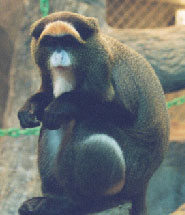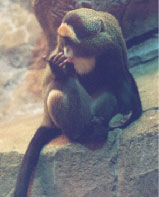This species has cheek pouches to carry food in while it forages. The average body mass for an adult male DeBrazza’s monkey is around 7 kilograms, and for the female it is around 4 kilograms; this is a sexually dimorphic species. This species has the most robust feet of all of the guenons.





